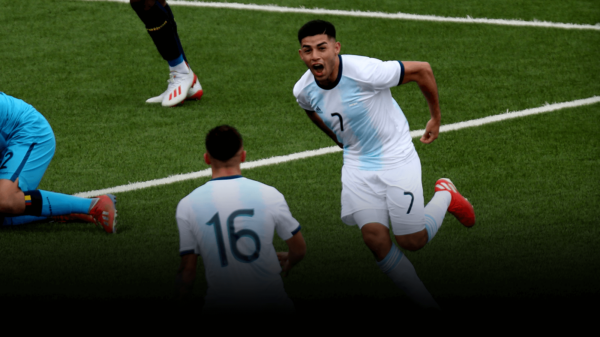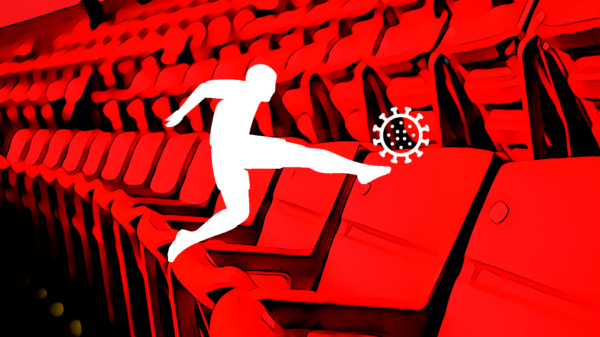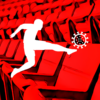The biggest game in world football had the attention of almost everybody on the planet, and the two best teams in the tournament took each other on in a clash of titans. The Germans were looking to secure their fourth World crown, while Argentina, led by the incredible Lionel Messi were chasing their third title. Aman Sardana looks at the tactical details of the game.
Lionel Messi’s face appeared on Maracanã’s displays as he stood over a free kick that was, by anybody’s guesstimates, far-flung and too wide of goal to think about shooting. But then this was one of the finest footballers in the world, a goal down in the World Cup final with two minutes remaining and history flitting through his fingers. He skied it and so went the opportunity of probably his lifetime. Replacing a retiring legend came 22 year old, Mario Götze in the 88th minute of the match, with bustling energy – and a fatiguing opposition. When the goal came, it was typical of this Germany side – probe for a flaw, make the opponents slog and punish callously. Götze’s left-footed volley past Sergio Romero at the end of Schürrle’s delivery was enough to affix a 4th star on Die Mannschaft’s crest and become the first European side to claim the trophy on Latin American soil.
Formations & Line-ups
Germany (4-3-3): Neuer; Lahm, Boateng, Hummels, Howedes; Schweinsteiger, Kramer (Schürrle 32′), Kroos; Özil (Mertesacker 120′), Klose (Götze 88′), Müller.
Argentina (4-4-1-1): Romero; Zabaleta, Demichelis, Garay, Rojo; Biglia, Mascherano, Perez (Gago 86’), Lavezzi (Agüero 45′); Messi; Higuain (Palacio 78′).
Goals: Götze 113’.

Made using Tactical Pad
ANALYSIS
Germans dominate possession
Right from the word go, Germany’s possession supremacy became evident. Recycling the ball efficiently and exploring each area of the pitch for weakness. Nippy, concise passing, good movement on & off the ball, and a frontline not shy to take chances. By the halftime mark they’d racked up 70.2% possession, controlling the ball well in all thirds of the pitch, especially the attacking third where Argentina were struggling to establish link up play.

Germany vs Argentina: First Half Possession | via FourFourTwo
The domineering forces came in the form of Schweinsteiger & Kroos in the heart of the German midfield. The duo were influential in getting the ball forward quickly from defence, with the latter more engaged in creating plays for his frontline. The former was responsible for spreading play to the wider areas. At the end of the first 45’, the two Bayern players had well ascertained themselves in the centre of the pitch.

Germany vs Argentina: Player Influence at Half Time | via FourFourTwo
Lack of firepower in the Argentinian frontline
Though, Sabella did manage to somewhat address Germany’s possession in his half-time talk, he could do very little about yet another lacklustre performance from his offensive players. Messi wasn’t given the freedom to cut in from the right on his left foot with Hummels and Howedes doing a fine job to that end. Shots kept going wide and Neuer had very little to do. Toni Kroos completely misjudged a header in midfield, lofted the ball towards his own goal and out of Hummels’ reach and sent Higuain in, who pulled wide. The Napoli striker had the ball in the net nine minutes later and was almost back to the Argentine bench celebrating before he saw the flag for offside. Argentina did have relatively easier chances, but failed to make them count. All of their 10 shots were off target.

Argentina’s shots | via Squawka
Lahm, Müller & Kramer
Germany soon settled on the right-hand side, deemed as the most lucrative outlet, targeting Marcos Rojo, a centre-back by trade, by pushing Philipp Lahm forward and allowing him to combine with Thomas Müller. While Toni Kroos was more riveted in the middle & on the left, Christoph Kramer, who filled in for a last minute injury to Khedira, did a decent job in midfield and linked up with the right wing players. Rojo started the tournament very audaciously but has since retreated into a more defensive position. Perez, too was deployed out of position on the left side to help protect Rojo and track Lahm. Both Argentinians failed to garner anything to a great extent. Müller proved significantly hard to mark, finding space to move into the middle of a false 9 setup, with Lahm happy to overlap. Kramer achieved an efficacious passing rate of 90%, with all of his passes to the right wing. Amongst them, the trio managed to notch up 11 crosses into the middle and created 2 chances.

Heat Map: Lahm, Müller & Kramer | via Squawka
Argentina sit back & defend; Germany push more players forward
After a vigilant opening spell, Germany began thrusting midfielders forward. They made their defence compact and then tried to create space between Argentina’s defensive and midfield lines. That meant slumping Kroos back and around Mascherano, bringing Mesut Özil inside and Müller off the edge to make room for Lahm’s runs. What Die Mannschaft ended up with, essentially, was three playmakers trying to find space between the lines – specifically in the central and right channels. Getting in behind Lucas Biglia and Perez was easy enough, but Mascherano was at his imperious best in the heart of midfield and repressed most attacks that came his way.

Germany had made more tackles higher up the pitch, while Argentina preferred to sit deeper | via FourFourTwo
Alejandro Sabella played a very imprudent game, relinquished possession and sat eight or nine behind the ball. It’s how this Argentina side plays best, as when they’re forced to control possession they tend to move the ball too slowly, lack true width and struggle to get around opponents’ formations. While Lavezzi started on the right to try to take advantage of any one-v-one opportunities with Howedes, Gonzalo Higuain’s deep positioning drew Mats Hummels and the German defensive line forward, in the hope of a quick counter.

The Argentinian defence made it extremely hard for the German play makers to pass through to the attackers. The back four maintained a straight line, interlocked players to block runs.
The Substitutes
Alejandro Sabella made shoddy substitutions that abridged his own side’s attacking threat, losing him the game in the process. Low’s subs look fantastic on paper – he brought on Götze who scored the winner and Schürrle who provided the assist – but it was Sabella who capitulated this tactical match. After an upbeat start to the second half, in which Argentina transitioned from 4-4-1-1 to 4-3-1-2 and created five minutes of pressure, they levelled out and flat-lined. Lavezzi, their most imposing dribbling threat, was taken off at half-time for Aguero who looked diffident, rusty and indisposed to run beyond. Later Rodrigo Palacio came on for Gonzalo Higuain, and while the latter had another bad game, Palacio was even worse. He incapacitated every single one of his team’s attacks without fail, giving the ball away, shooting wide, being tackled and being crowded out. The outline of Argentina’s game was set out for victory: Mascherano tackles – one raking pass into the channel – goal scoring chance. Regrettably, every chance ostensibly fell to Palacio. Meanwhile, German subs, Götze and Schürrle were causing all sorts of problems for the Argentinian defence on the left wing, linking up & interchanging spectacularly, eventually resulting in a goal.

Germany vs Argentina: Substitutes, Götze vs Palacio | via FIFA.com
A Tactical look at Götze’s goal

Schürrle continues his run. Götze twists and cuts inside, between Zabaleta and Demichelis. His run creates space for Schürrle to fly down the wing.

Götze is left completely unmarked by the defence. He moves into the box waiting for Schürrle’s cross, as Garay spectates from the edge of the area.

Schürrle’s lob reaches Götze, who calmly controls it on his chest before dispatching it past Sergio Romero.
Key Player of the match
“I said to Götze: ‘OK, show the world you are better than Messi and can decide the World Cup’. I told him that. I always had a good feeling about Götze. Argentina were becoming more and more tired, but we had players who could make a difference. Götze is a miracle boy, a boy wonder.”
– Joachim Low
Jogi Low’s substitutes won him the game but it did look like, coming off the bench, Götze was ordained to score the winner. Backed by many to start the game ahead of Özil, Low’s decision to use him as an impact sub paid off and his introduction at the latter stages reinvigorated the German gameplay, something that a wearing Argentina side couldn’t cope with. He was also the only player to have more than one shot on target in the final. Javier Mascherano in the holding role was phenomenal for Argentina like he has been for most of this tournament, arguably their most steady player. Jerome Boateng gets an honourable mention for his hard work at the back of the German defence.
Where does this leave them?
Sabella retires on the back of a colossal disappointment, but second place is nothing to be snuffled at. Strategically, La Albiceleste were questionable throughout the tournament, but the prevalent factor that let them down was their misfiring frontline. Messi, named player of the tournament, will have to wait longer to get his hands on the gold trophy. As for the rest of his team, this was a hard fought Argentina performance but they were up against the most remarkable group of international footballers of this generation. Conclusively, Germany go home with the 2014 World Cup, with a promising young squad and immense talent in their ranks. Throughout the course of their campaign, they have surfaced as a side that never gives in and is brimming with young players who can step up to the big stage and perform. They are now one behind Brazil’s tally of 5 World Cups won.




























































